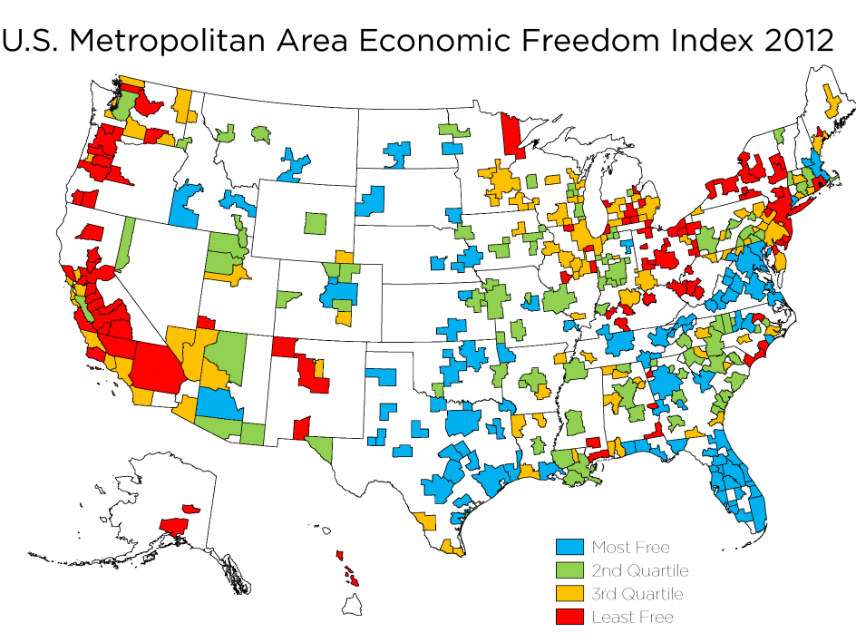Houston Trounces L.A. and New York City in New Ranking of America's Freest Metros
A new Reason Foundation report finds cities in Texas and Florida have the highest degrees of economic freedom.

More often than not the government that matters most is the government closest to home. That's the idea behind a new study from the Reason Foundation (the non-profit that publishes this website), which ranks U.S. metro areas by their level of economic freedom.
There already exist country and state-level indices for economic freedom. Useful as those are, they also obscure a lot of policy diversity says Dean Stansel, the author of the Reason Foundation report.
"Ultimately, the farther down we drill, the closer we get to locality, the more accurate it's going to be," says Stansel, telling Reason that these local policies can play a big impact on economic outcomes across cities.
Stansel's report looks at Metropolitan Statistical Areas (MSAs) which usually include multiple cities and even counties, and which give a more complete picture of a local area's economy.
The report divides these MSAs into two lists, those with a 2012 population of one million or more, and those with less than that. Each is then scored on their levels of government spending, taxation, and labor market regulation to produce an index score between zero and ten, with ten being maximum, Galt's Gulch levels of economic freedom.
Of the 52 American metros with more than one million residents, the report finds that the booming Houston Metro Area is where freedom rings the loudest, with a score of 8. Jacksonville, Florida, comes in at a close second place, with an economic freedom score of 7.92.
Of the top ten most economically free MSAs, eight of them are either in Texas or Florida—with Nashville, Tennessee, and Richmond, Virginia, also finishing in the top 10.
The poor performers on the index are much less geographically concentrated. According to Stansel's rankings, the Riverside-San Bernardino-Ontario metro area in Southern California comes in as the least free metro area in the country, with a near Soviet-level score of 5.23. The country's two largest metro areas of Los Angeles and New York City both landed in the bottom 10, as do Portland, Oregon, and a collection of metro areas in Ohio and New York State.
Naples, Florida, ranks as the most free metro area with a population less than one million residents, while El Centro, California, was the least free small market metro area.
Far from being an abstract measurement, Stansel's report finds that higher economic freedom rankings across metro areas have higher levels of economic growth, population growth, and even better city credit rankings.
The top quartile of 'most free' metros had per capita incomes that were 5.7 percent higher than average, while the bottom quartile of 'least free' cities had per capita incomes that were 4.86 below the average.
"The biggest punchline is this stuff matters for real outcomes, for how well the local economy thrives, but also for how well off the people are," says Stansel.
Whether economic dynamism is worth the heat and hurricanes that plague Texas and Florida is something individual readers of the report will have to decide for themselves.
Rent Free is a weekly newsletter from Christian Britschgi on urbanism and the fight for less regulation, more housing, more property rights, and more freedom in America's cities.
Show Comments (65)